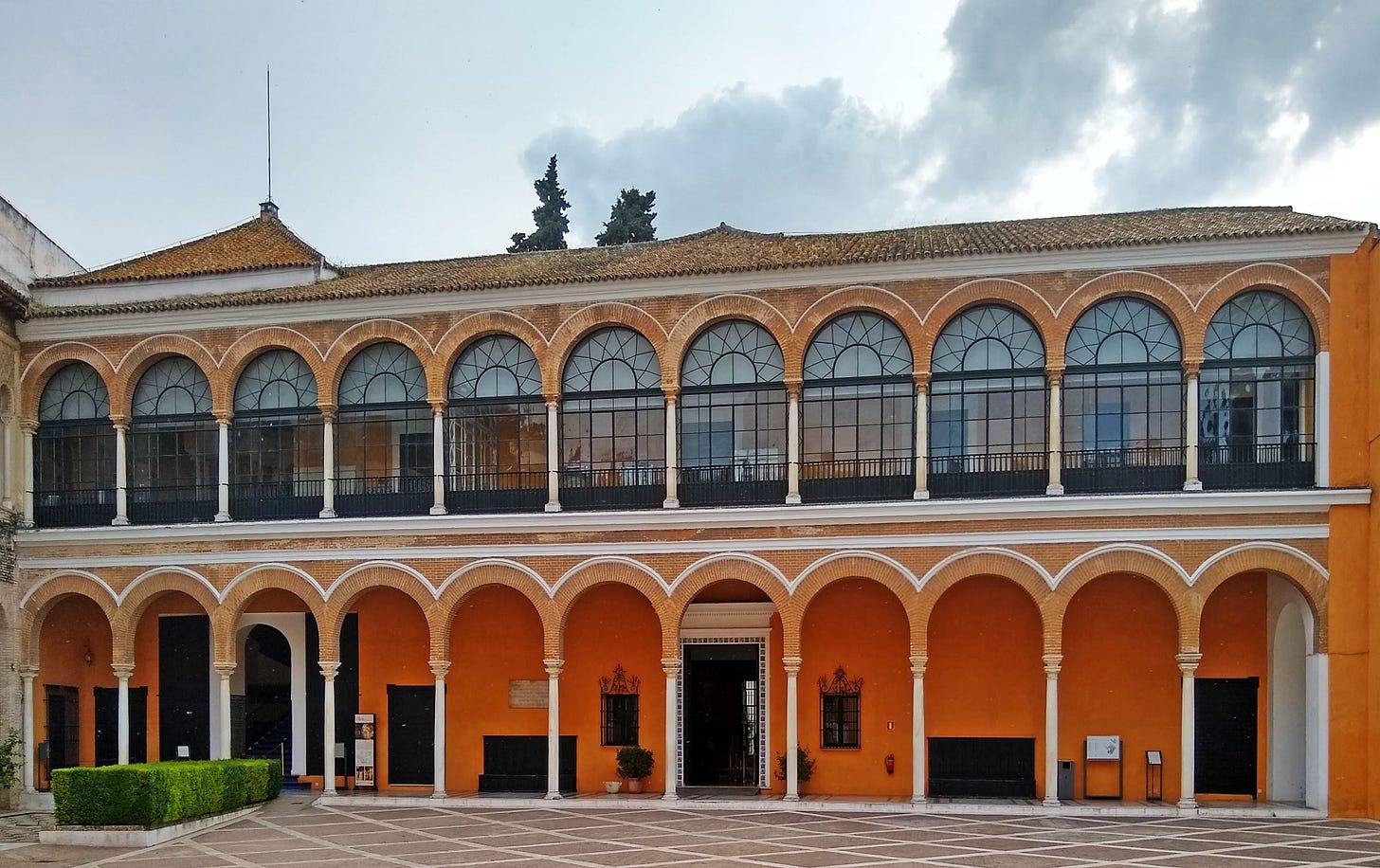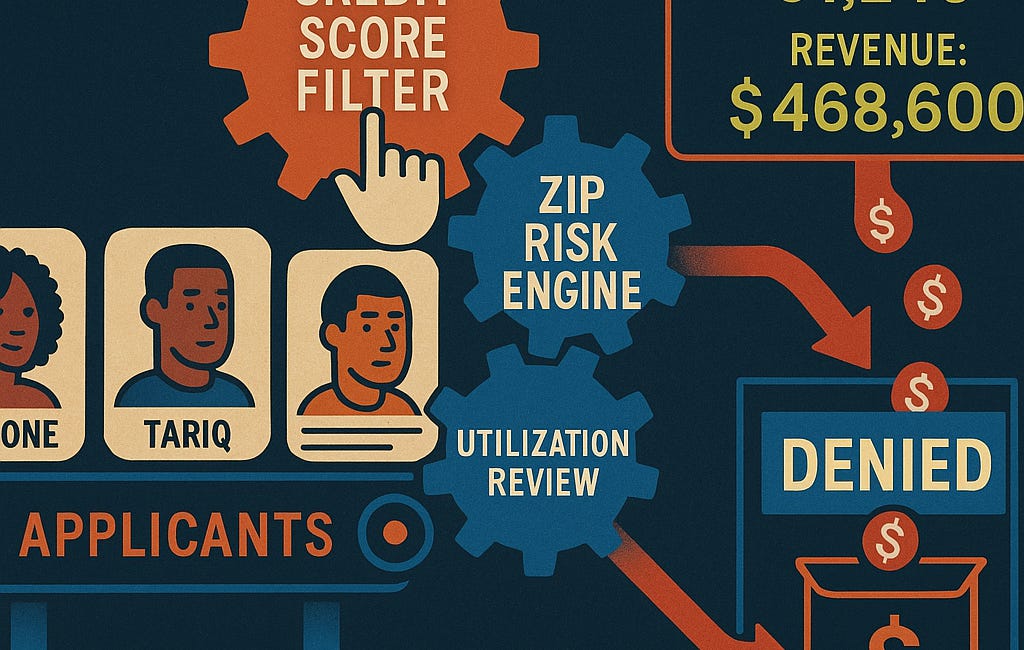Long On Exclusion: How Investors, Institutions, and the State Keep the Margin Open
From 1493 papal decrees to 2025 AI eviction pilots, and the single profit logic that sustains them.
This is Part II in the “When Racism Pays” series. Read Part I.
Exclusion in America isn’t a historical fluke or a byproduct of old prejudice—it’s a business model, refined across centuries and retooled every time the law, markets, or movements threaten the margin.
The paper trail goes back to 1493, when Pope Alexander VI’s Inter Caetera gave Spain and Portugal license to “subdue and convert” non-Christians, turning colonization into a legal and financial playbook. Genoese and Portuguese banks issued loans against the future value of captives; Antwerp and London insurers baked a 15–20 percent shipboard death rate right into their premiums, treating mass loss of life as normal risk.
The Casa de Contratación in Seville logged enslaved Africans on manifests beside shipments of bullion and spices—human beings as another asset class, booked and insured.
From the start, racial exclusion was engineered in contract language and built into ledgers—not just in rhetoric, but in financial flows and standardized paperwork. The colonial system was nothing if not explicit: the Church granted legal cover, merchant banks wrote the checks, and colonial courts turned short-term IOUs into everyday liquidity. These bonds, backed by the expected labor of people not yet even captured, gave European merchants the tools to speculate on human life, and helped kickstart the Atlantic credit system.
The machinery didn’t just enable slavery—it depended on it.
By the time America broke from Britain, exclusion had been fully absorbed into the country’s operating system. After the 1807 abolition of the transatlantic trade, the U.S. internalized the machinery, and by 1860, enslaved people made up $3–4 billion in American assets—outvaluing all the country’s railroads and factories put together.
Northern banks like Lehman Brothers and Brown Bros. Harriman didn’t just look the other way; they wrote mortgages against enslaved people, and giants like Aetna and New York Life sold insurance policies on Black lives. Lloyd’s of London insured slave ships by name.
Cotton alone powered half of all U.S. exports, built Wall Street’s early fortunes, and supplied the capital that made these arrangements self-renewing.
Abolition, when it arrived, simply changed the paperwork. The 13th Amendment banned slavery “except as punishment for crime,” and states immediately filled the gap with new statutes: vagrancy laws, debt peonage, and criminal codes written to maximize arrest. Corporations like Tennessee Coal & Iron (which became part of U.S. Steel) leased prisoners by the hundreds, with contracts that literally required the state to replace any convict who died on the job—turning Black life and death into a budget line item. Alabama’s budgets called leasing revenue “cost avoidance.” Sharecropping and crop-lien contracts locked Black families into intergenerational debt, their fates determined by courthouse signatures and merchant ledgers.
When mass criminalization became harder to defend outright, financial innovation took over. In the 1930s, federal agencies like HOLC and the FHA drew red lines around Black neighborhoods, rating them “hazardous” and freezing out entire communities from access to mortgages and insurance. Major lenders enforced these boundaries, and mortgage-backed securities—bundles of white-only loans, given AAA ratings by S&P and Moody’s—channeled wealth into suburbia while stripping more than $160 billion in Black home equity by 1980. (The Color of Law shows the mechanisms in full.)
Urban renewal was simply the next update. Cities and universities, from Columbia to the University of Chicago, used “blight” designations to bulldoze Black neighborhoods, moving entire populations and redrawing school, voting, and tax districts to cement segregation. Highways and public bonds re-routed investment, not by accident, but as planned disinvestment from communities that had been deemed risky, unprofitable, or undesirable.
By the 1970s, carceral capitalism was the new engine. “Tough-on-crime” statutes exploded prison populations, and states signed contracts with companies like CoreCivic and GEO Group that guaranteed 90–95% occupancy. Jail telecom monopolies like Securus and GTL extracted up to 60% of every call’s cost, and counties treated those commissions as steady revenue. Defendants were charged for probation, drug testing, and even their own jail beds—municipal budgets balanced not by taxation, but by extracting from the most surveilled.
Then came the algorithmic era. FICO and VantageScore built ZIP codes, utility histories, and “thin files” into credit scores—automating redlining by design. Tenant screening and background check vendors (RealPage, CoreLogic, Yardi, Checkr) sold black-box risk scores for housing and jobs—unappealable, often racist in effect, and invisible to those shut out. Predictive policing systems like Palantir and PredPol mapped patrol routes on old arrest records, all hidden by NDAs that lock away the algorithmic logic.
Meanwhile, the consulting giants—PwC, KPMG, S&P—cashed in on a parallel market of “fairness audits” and compliance dashboards that rarely altered the underlying exclusion, but turned regulatory pressure into a new product.
By the 2020s, exclusion is digital, ambient, and ever more automatic. Pandemic relief and benefits are screened through platforms like ID.me and Accenture, whose matching systems flagged thousands of claims for minor inconsistencies or “unstable” addresses, blocking unemployment and food access for those who needed it most. Invitation Homes and other corporate landlords led the nation in pandemic-era evictions, using automated filing software to push cases forward after just 15 days of missed rent. Broadband, SNAP, and basic income pilots rely on algorithmic eligibility—optimizing scarcity and offloading risk onto those least able to contest it.
And every time one method is outlawed or exposed, the system adapts:
Slavery banned? Vagrancy arrests and convict leasing take over.
Redlining banned? Credit scoring and ZIP-based filtering fill the gap.
Jail fees capped? Monitoring apps and video call surcharges pop up.
Bias audits mandated? Compliance dashboards and “fairness” products become new revenue streams.
Don’t mistake this for evolution. It’s profit logic—exclusion is simply made more ergonomic, more invisible, and more billable.
The American Ergonomic Ideal explains the design philosophy.
It’s also never random. Every exclusion is written in code or contract, lobbied for, and renewed at each pivot point. If this were accidental or “emergent,” you’d see drift or instability. Instead, the margin compounds, generation after generation.
Emergence Is an Excuse debunks the myth.
No part of the institutional supply chain is untouched: municipalities depend on fines, fees, and incarceration to balance books; banks and insurers filter applicants and protect their margins; data brokers monetize records of arrests and evictions; tech firms provide both the exclusion engines and the “audit” tools that allow the system to self-certify.
No Unprofitable People walks the supply chain.
The solution isn’t better risk models, or more audits. It’s
universal provision—eligibility for housing, healthcare, credit, and broadband by right, not algorithm
a complete ban on proxy data like ZIP code or arrest records in critical services;
public or non-profit stewardship of infrastructure; open contracts and code, no NDAs; and
binding community vetoes over any new exclusion tool.
Universal systems don’t just reduce exclusion—they kill the incentive to surveil, filter, and sort.
Universality Disincentivizes Surveillance lays out the case.
From papal decrees to eviction APIs, exclusion is never obsolete. The tools—bulls, bonds, ledgers, maps, dashboards—are renewed and refined in every era.
We can disrupt the margin, or underwrite its next upgrade.
Racism as a Business Model
Racism isn’t just a misunderstanding or a moral failing, and it’s not simply a relic awaiting outgrowing. Again and again, it operates as a business model—built to profit from exclusion, extraction, and denial.



